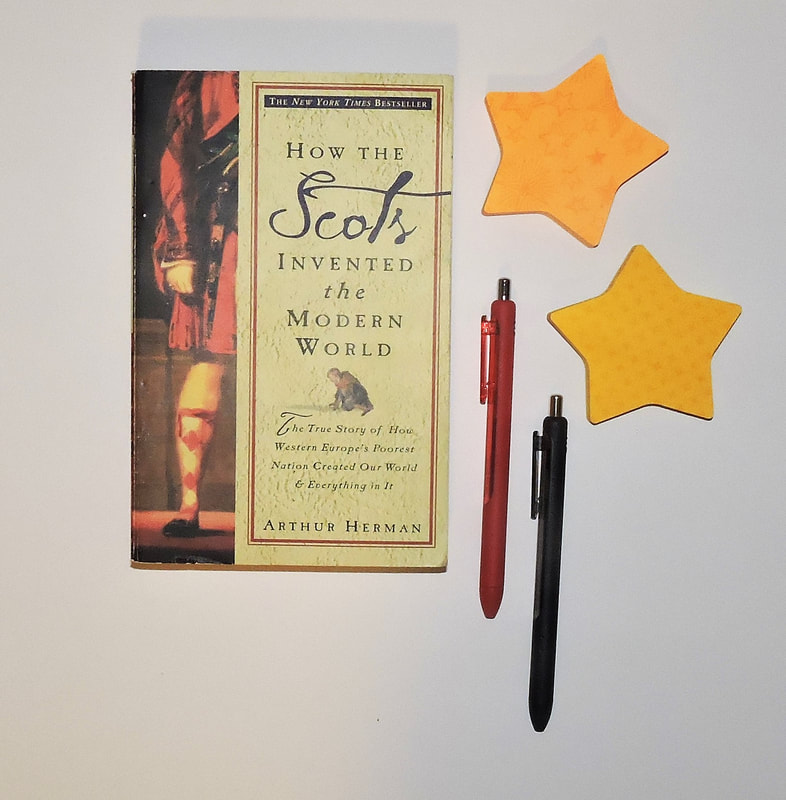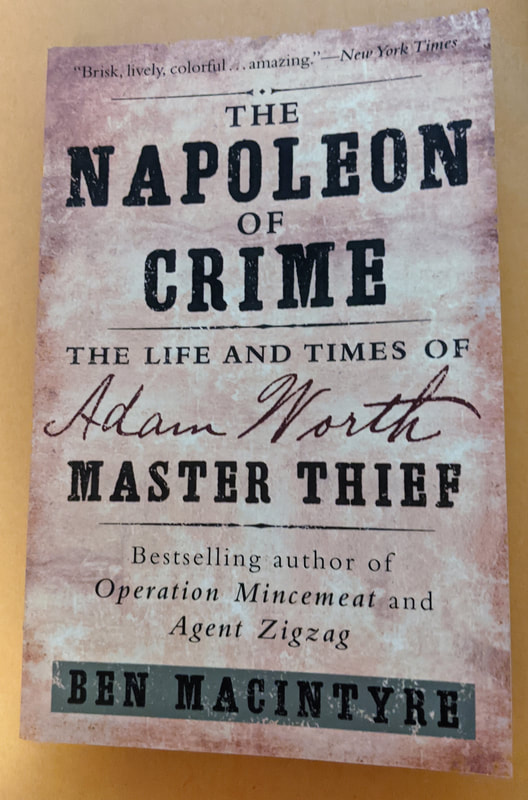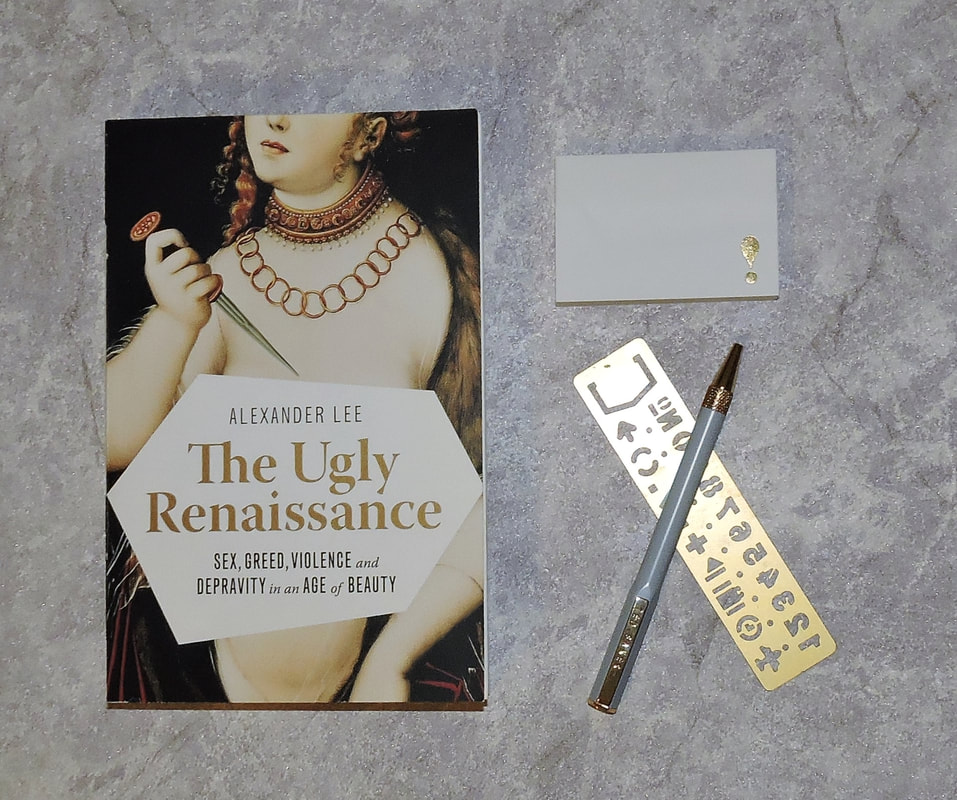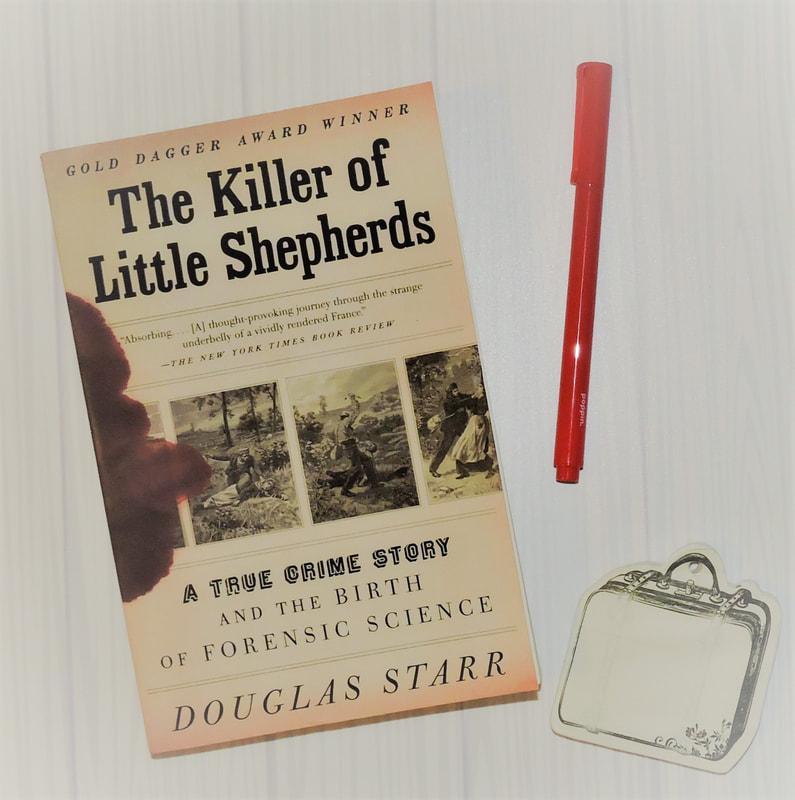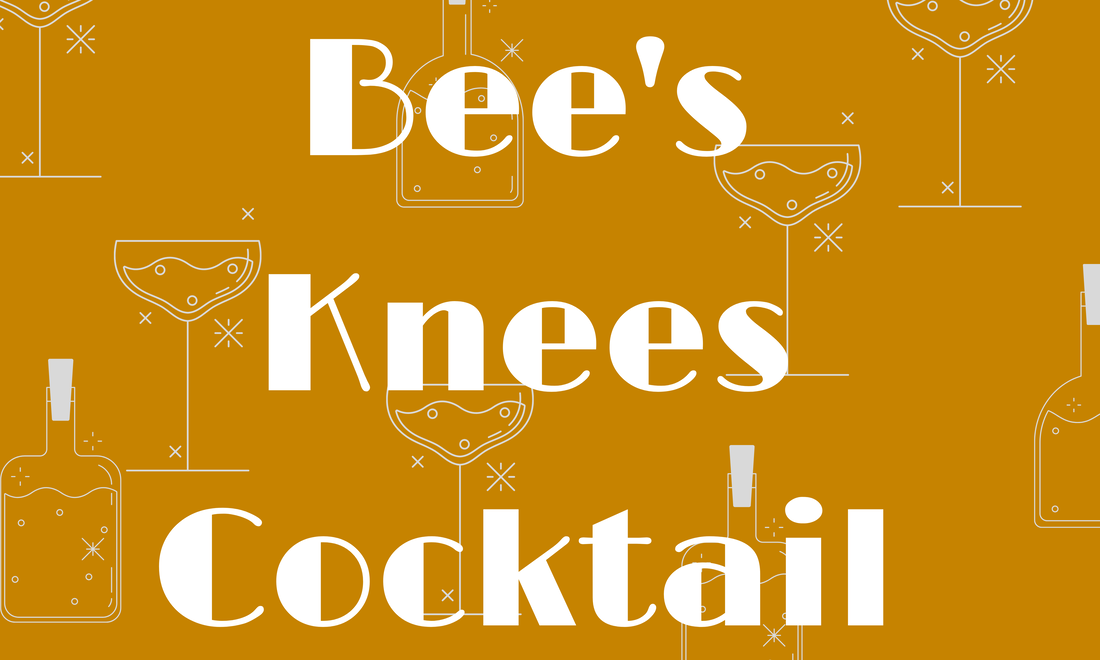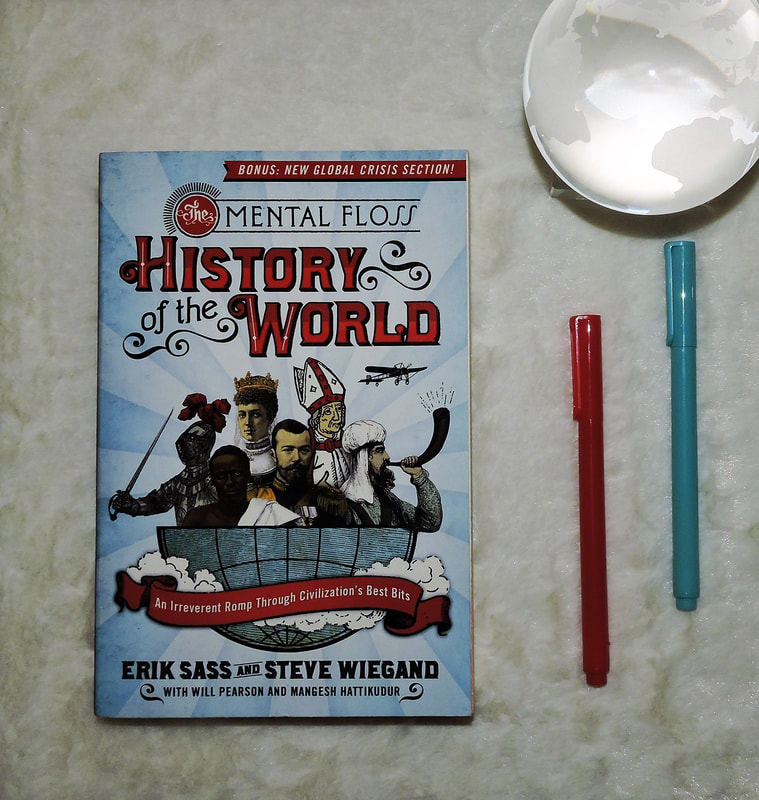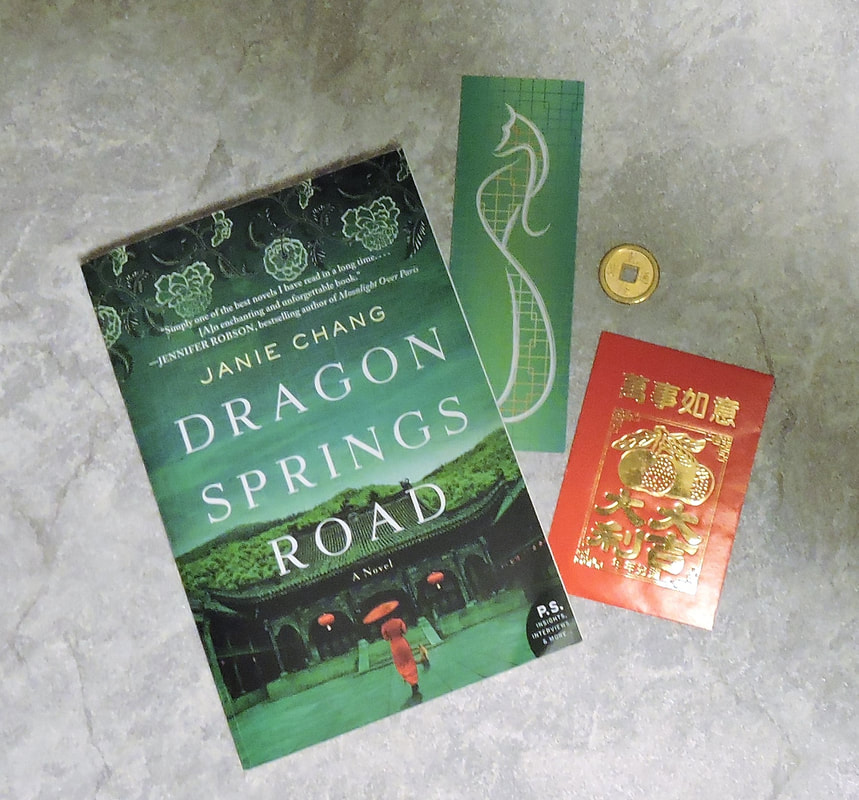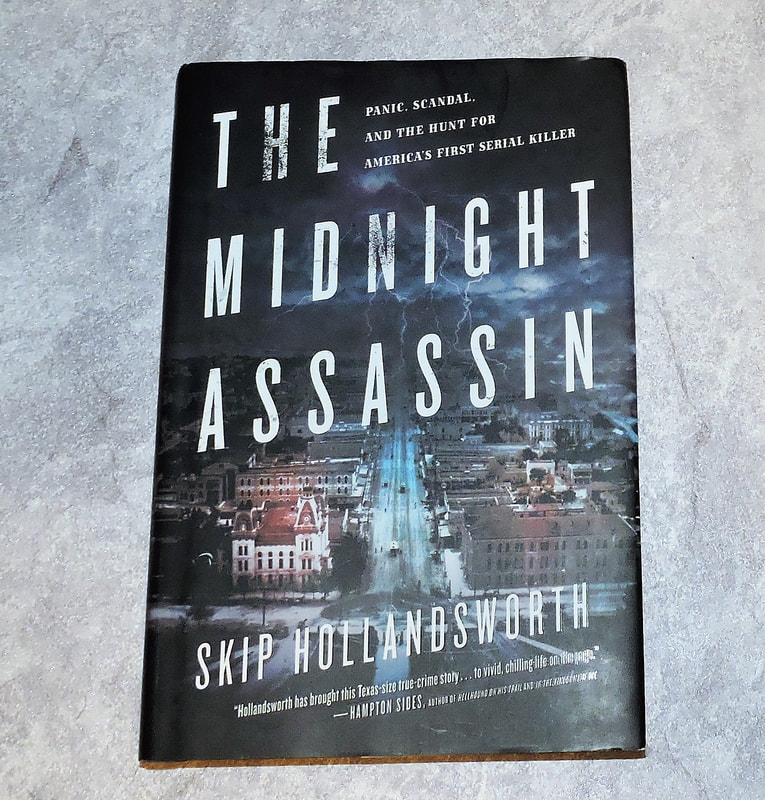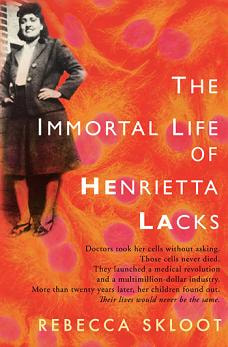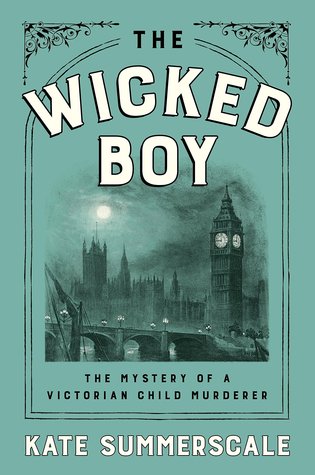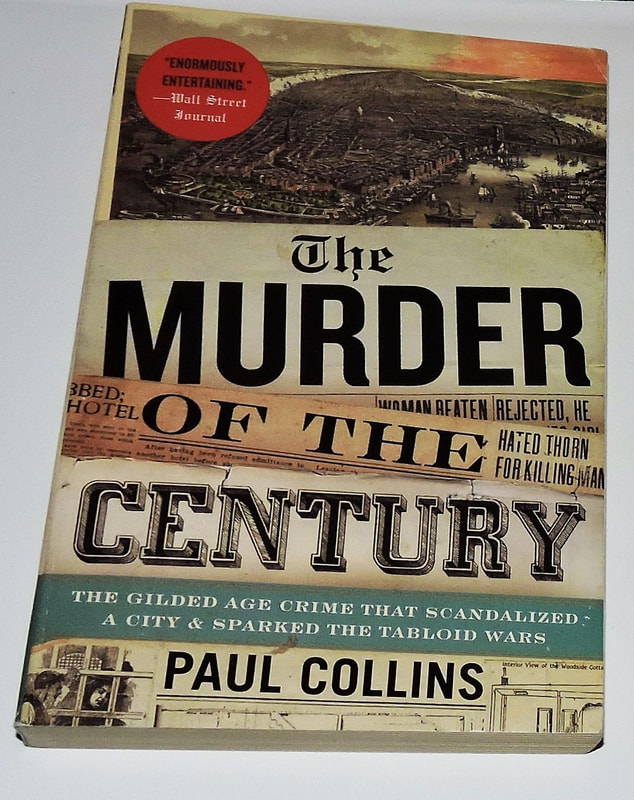|
So, I picked this book up because it reminded me of another book I enjoyed which was How the Irish Saved Civilization (by a different author, Thomas Cahill I think?). It's the theme of a culture, usually through diaspora, sharing literature/philosophy/art, etc.
With the Irish book, the argument is that because Irish monasteries housed writing and not gold, they were often repositories of knowledge lost by other European countries during the Medieval ages. Only through the diaspora and inclusion of Ireland (usually via British invasion) was this knowledge dispersed. Granted, it wasn't like the Middle East, Asia, Africa, or the Americas were wandering around clueless...they also had a strong literary tradition of all this stuff, but still. This book is more on Philosophy and Education that was passed through Scottish diaspora. I took a lot of philosophy courses in college, so this wasn't totally new to me, but I think it can be a bit dry if that's an uninteresting subject. I thought it was really interesting but I'm a huge nerd. The Scottish diaspora was in tandem with the Highland clearances and with the British Empire "colonizing" the world. Colonizing or you know...invading. NPR did an interview with Arthur Herman, which I managed to embed. I love NPR. Herman was a coordinator of the Smithsonian's Western Heritage Program. He now a senior fellow at a Think Tank called the Hudson Institute. Think tanks can be full of brilliant people or morons. The Hudson Institute is a conservative think tank that writes semi-interesting reports and blows smoke up conservative men's assholes. So... the norm I suppose. No, seriously, look at who they give awards to and then tell me I'm wrong because I am not. I live and work around politicians. They need a lot of smoke blowing. A small, select few need to be put in a padded room. We don't have to name names. We all know who.
0 Comments
I was pretty excited to begin this book. I love books about art crime (Mostly the gentleman thief variety). Art and antiquities crime is a huge international black market. Truly harrowing to think about.
Adam Worth was a master criminal, known for his frauds and deceptions, but also for stealing a painting of Georgianna Cavendish (Duchess of something) by Thomas Gainsborough. There are run-ins with the Pinkertons (before they became totally union busting jerkfaces), safe cracking, crimes across Europe and America. Adam Worth is also the supposed inspiration for Moriarity in the Sherlock Holmes books. Allegedly. Ben Macintyre does talk about this in one of the chapters, so fun to read about it. Ooo, we're getting into my favorite subject matter in nonfiction---artsy farsty stuff. LOVE it. I'll read anything with art theft, art forgery, and art history. Endless fascinated. I took a lot of classes in art history and humanities in college (way back when), so this book wasn't filled with all new information for me. I loved re-exploring it though.
Alexander Lee focuses on the Renaissance period and touches on the money and power that moved the art to its greatest zenith for the time. Michelangelo, Brunelleschi, and Raphael were just a few of the artists that were patronized by the wealthy and powerful (like the Popes, the Medicis, the royal families of Europe, etc.) that were in constant power struggles with each other and within their own ranks. It's truly fascinating...even if you don't like art. Oh, this book was a revelation! It's one of those multi-storied books. We get the story of a serial killer and his apprehension, a story on how the lawyer changed how to prosecute, and the story of how a scientist used forensics to catch the criminal. We also get to have the culture of France at the time, the history aspect really. It's one of my favorite type of book set ups. I'm not sure if it has a name. Popular History? But with this multiple arcs.
That being said, it's a lot of information. Obviously, any of these aspects could fill multiple books by breaking it down in detail. I got enough to understand everything though. Douglas Starr is a new author to me. He has another book, aptly titled Blood, about how blood became valuable in the medical field. I do like my nonfiction to be science or history, so I might see if I can pick that up soon. For all its simplicity, the origin of the Bee's Knees cocktail is murky. It was created some time during Prohibition and appeared in print after the repeal of the eighteenth amendment in 1933. Because of the secretive nature of drinking during Prohibition (in the States at least) it's not likely to pin down a date or creator. I've read that it was created in Paris at the Ritz by Frank Meier, or it was created by the Unsinkable Molly Brown of Titanic infamy, or came to be in an American speakeasy. Prohibition was ratified as the 18th Amendment to the U.S. Constitution in 1919, it outlawed the manufacturing, sale, import, and export of liquor for drinking purposes in the United States. People could get medicinal alcohol through their physicians, but otherwise they would have to enter a Speakeasy and drink illegally. Prohibition was repelled with the 21st Amendment in 1933. OriginsThe first known use of 'The Bee's Knees' was in 1921 as an idiom meaning someone or something excellent, perhaps from the idea that bee's carried honey in sacs on their legs. The actual cocktail is though to have been created in the middle of Prohibition but the first record of it comes from the 1934 Boothby anthology. Bill Boothby wrote a cocktail compendium (that can still be purchased) titled World Drinks and How to Mix Them. There is a thought from some historians/mixologists that the saccharine aspect to the drink was to hide inferior gin (or "bathtub" spirits). Prohibition meant that any alcohol created had to be industrial (which is used for perfume, inks, fuel, etc.). To deter bootleggers and adventurous dipsomaniacs, the Volstead Act was implemented, this was the impetus to allow enforcement of the 19th Amendment. Deterrents (denaturants) were added to industrial alcohol to make it undrinkable. These initiatives barely slowed bootleggers but it did cause a rise in tainted-alcohol induced death, as at least one third of all industrial alcohol created during Prohibition was thought to have been diverted for personal drink. A 1927 report from New York noted that of the half million gallons confiscated that year contained various forms of toxic additives. I'm reading a book about the way the New York Coroner's Office detected poisonings, and there is an entire chapter about wood alcohol (and other prohibition era related alcohol deaths). it's called The Poisoner's Handbook by Deborah Blum. PBS did a documentary on it as well. It's truly excellent. The Mental Floss History of the World: An Irreverant Romp Through Civilization's Best Bits10/26/2020 I took a week off of work last week and used it to clean and do laundry and just veg. I think I needed it because I've fallen so behind with everyone staying with me. I'm still not caught up but it's not unsurmountable and that's just a relief. I also voted and dropped off the ballots for everyone else in the house. It was a group trip. No idea how this election is going to go but I've done my bit.
There's also a hurricane somewhere in the ocean (or a bad storm) because my nerves are on fire. My migraines have shifted and now I have a pronounced sensory aura. When WebMD says that you can have "pins and needles, or burning" it really underestimates what that means. Burning, for me, feels like my nerves (which I can feel) are on fire. It stops me cold. I'm also getting nauseous. BUT the head pain itself is less. So, it's a trade off I'll take. I guess the medicine is working. Although my doctor pointed out that the aura might have always been there in some form but I didn't notice it because my head pain was so bad and constant. So now I notice all the other things. That was a sobering thought. Whatever. I'm going to be slow today but it'll get done eventually. I read this book over a period of weeks as it's a lot of information. I think it's a basic recap of what you (should have) learned in high school/middle school history class. Unless you went to the charter school in Texas my cousins (and a few state/national representative's children) went to. They're....dumb. That's not nice to say but there were some hefty payouts for college admission (the "normal" way, not the Operation Varsity way) and lots of remedial courses. I guess dumb isn't the right word, they're uneducated because the charter school failed them. Of course, since there are no (or few) regulations around charter schools there wasn't any safety net where administrators could come in and clean it up. Their mom is furious because my safety school wouldn't admit any of her kids. I don't really understand the total of Texas social scene but apparently the state school which was my safety is where a certain social class goes. I don't know. She explained it to me when I was applying and I had it as a safety as my family was nearby but I chose a different school in the end. I tutored two of her kids through the remedial classes by phone. On top of the tutoring they got at college. So they passed eventually but those remedial classes don't carry the same level of credit as the history 101 stuff if I remember correctly. I asked a lot of questions about their charter school (middle + high) because I couldn't figure out HOW they had graduated without knowing the basic stuff. They learned creationism (and ONLY that) and that all dinosaurs roamed the earth at the same time as the Early Civilization peoples (ummm...). Also, they learned that Benjamin Franklin was a President (he was not). I feel like I've blabbed on a few things I probably shouldn't have. There are just certain children of certain politicians who have been ill served by the environment their fathers (and grandfathers created). I guess you get what you vote for. Not my problem...except now we have a huge bunch of idiots running around. We should talk about the book. Yup. Something is a little wonky with my scheduling aspect of the website. I'm not sure if it's me (and something I can fix) or something that someone with more technical experience and back-end knowledge only can fix. So...this is supposed to show up on Wednesday...but we'll see how that goes.
I received this book in a Muse Monthly box, which no longer exists. It was a fun box because I received books (and tea!) from authors that I wouldn't normally gravitate towards. I wouldn't say I enjoyed all of them but I think the box editor's taste was pretty good. It also helped me gather more of a taste of tea flavors. I thought I was going to prefer lighter tea, floral teas,etc...nope. Black tea. STRONG tea. Light me up because I need my tea to be vicious. I picked this book up pretty much the moment it was released. I kinda talked about it but I didn't ever review it. I really like Skip Hollandsworth's articles and writing style so even if I wasn't interested in the topic itself, I knew that this book was going to be right up my alley. Of course, it's a real life historical mystery, so it's absolutely something I'm interested in.
This book is about a series of murders that took place in Austin in the 1880s, after the Civil War. Some of these murders (if not all of them) are thought to have been perpetuated by one person--presumably America's first serial killer. This was around the same time as Jack the Ripper and like his/her British counterpart, these series of crimes remains unsolved. It's somewhat difficult to write a long book about a series of unsolved murders, committed in the past, with unreliable evidence, so Hollandsworth also brings in the changing culture of Texas (a Confederate state). He covers politics (Austin was the new capital city), politicians (quite a few Confederate soldiers came back to run the state), new inventions, society changes (how servants lived) and how crime was taken care of during this time period. Skip Hollandsworth has about 30 pages of articles from Texas Monthly if that's of any interest. His newest (as of today) article is titled The Serial Killer of Laredo: The Serial Killer That Hid In Plain Sight Among the Border Patrol's Ranks. One of the most fascinating articles he wrote is called "Midnight in the Garden of East Texas," about how Bernie Tiede murdered Marjorie Nugunt. The town (Carthage, Texas) rallied around Bernie during his arrest and trial (and his release). Honestly, it's one of these true-crime cases that is just...bizarre.
I read this book as part of a now-defunct book club. Book clubs never last long when I join, I might be bad luck.
To be fair...I was one of two people who had actually read the book so perhaps that was some of the issue. I bought this on a whim. It's a nonfiction, historical, murder mystery. It's my jam! The copy I bought was an older library version (from Philly!). It's my first Kate Summerscale book but I have another one of her books on my bookshelf and the television series on my list. I'll get around to it eventually.
I picked this book up because of my muted knowledge from history class about the "tabloid wars" and "yellow journalism." I wanted to know more and I like narrative history books. I bought this book used off Amazon.
|
Archives
June 2024
Categories
All
|
